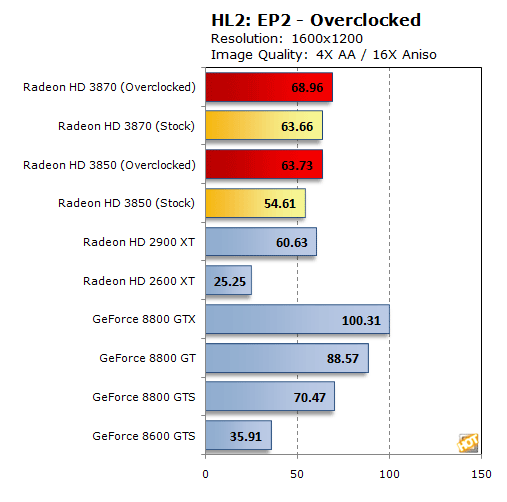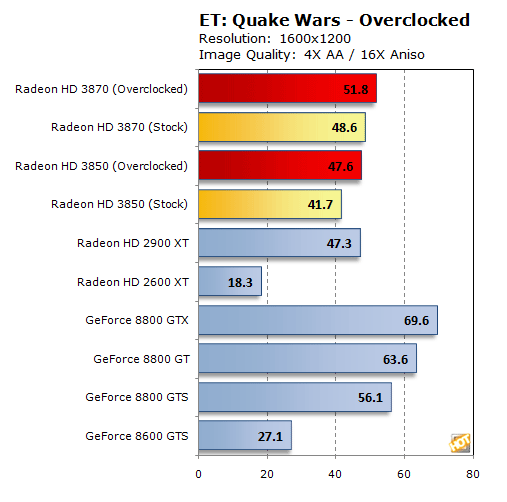ATI Radeon HD 3870 and 3850: 55nm RV670
Overclocking the new Radeons

For our next set of performance metrics, we spent some time overclocking the new Radeon HD 3870 and HD 3850 cards, using the Overdrive utility built into ATI's Catalyst drivers.
As you can see, the latest revision of Overdrive is a vast improvement over previous offerings. This revision of Overdrive now gives users the ability to individually overclock cards when running in CrossFire configurations. It also has a new built-in test, wider frequency ranges, as well as GPU activity and temperature monitors.
|
To find the Radeon HD 3870's and 3850's peak core and memory frequencies, we slowly raised their respective sliders until we begun to see visual artifacts on-screen while running a game or benchmark, or until our test system was no longer stable

Radeon HD 3870 (Overclocked): GPU=845MHz, Memory=1186MHz
Radeon HD 3850 (Overclocked): GPU=770MHz, Memory=1040MHz
Radeon HD 3870 (Overclocked): GPU=845MHz, Memory=1186MHz
Radeon HD 3850 (Overclocked): GPU=770MHz, Memory=1040MHz
Ultimately, we were able to take the Radeon HD 3870 up from its stock GPU and memory clock speeds of 777MHz and 1126MHz to 845MHz and 1186MHz, respectively. The Radeon HD 3850 went from 670MHz (GPU) and 830MHz (Memory) to 770MHz and 1040MHz. While both cards were overclocked, we re-ran a couple of high-resolution benchmarks and saw significant increases across the board.







